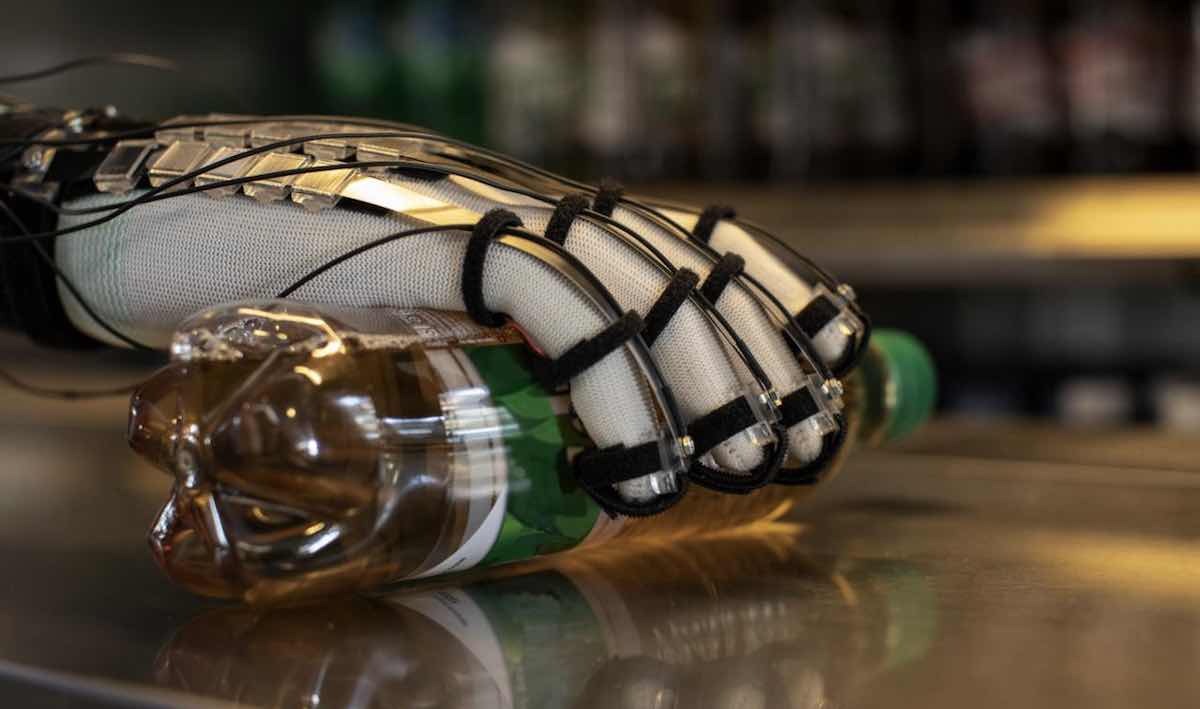Engineers and software developers around the world are seeking to create technology that lets users touch, grasp and manipulate virtual objects, while feeling like they are actually touching something in the real world.
Researchers have just made a major step toward this goal with a new glove, which is not only lightweight – under 8 grams (0.3 ounces) per finger – but also provides feedback that is extremely realistic.
The glove is able to generate up to 40 Newtons of holding force on each finger with just 200 Volts and only a few milliWatts of power. It also has the potential to run on a very small battery. That, together with the glove’s low form factor (only 2 mm thick), translates into an unprecedented level of precision and freedom of movement.
“We wanted to develop a lightweight device that – unlike existing virtual-reality gloves – doesn’t require a bulky exoskeleton, pumps or very thick cables,” says Herbert Shea, head of L’Ecole Polytechnique Federale de Lausanne’s Soft Transducers Laboratory.
The scientists’ glove, called DextrES, is made of nylon with thin elastic metal strips running over the fingers. The strips are separated by a thin insulator. When the user’s fingers come into contact with a virtual object, the controller applies a voltage difference between the metal strips causing them to stick together via electrostatic attraction – this produces a braking force that blocks the finger’s or thumb’s movement. Once the voltage is removed, the metal strips glide smoothly and the user can once again move his fingers freely.
For now, the glove is powered by a very thin electrical cable, but thanks to the low voltage and power required, a very small battery could eventually be used instead.
LOOK: Depressed by Cable News Playing in Public Everywhere, He Designed Glasses That Black Out Screens
“The system’s low power requirement is due to the fact that it doesn’t create a movement, but blocks one,” explains Shea.
The next step will be to scale up the device and apply it to other parts of the body using conductive fabric so that the researchers could eventually design an entire suit as well.
“Gamers are currently the biggest market, but there are many other potential applications – especially in healthcare, such as for training surgeons. The technology could also be applied in augmented reality,” says Shea.
Reprinted from L’Ecole Polytechnique Federale de Lausanne
(WATCH the glove in action below) – Feature photo by Marc Delachaux / 2018 EPFL
Be Sure And Pass On This Cool Bit Of News To Your Friends On Social Media




















